In many ways, the last years of the 19th century and the first decade or so of the 20th were the golden age of coastal artillery. While the guns themselves might be no more powerful than those taken to sea, and the ability of fortifications to stand up to direct hits was dubious, weapons mounted on solid ground were far more accurate than those on a moving ship, and could thus strike at greater ranges.
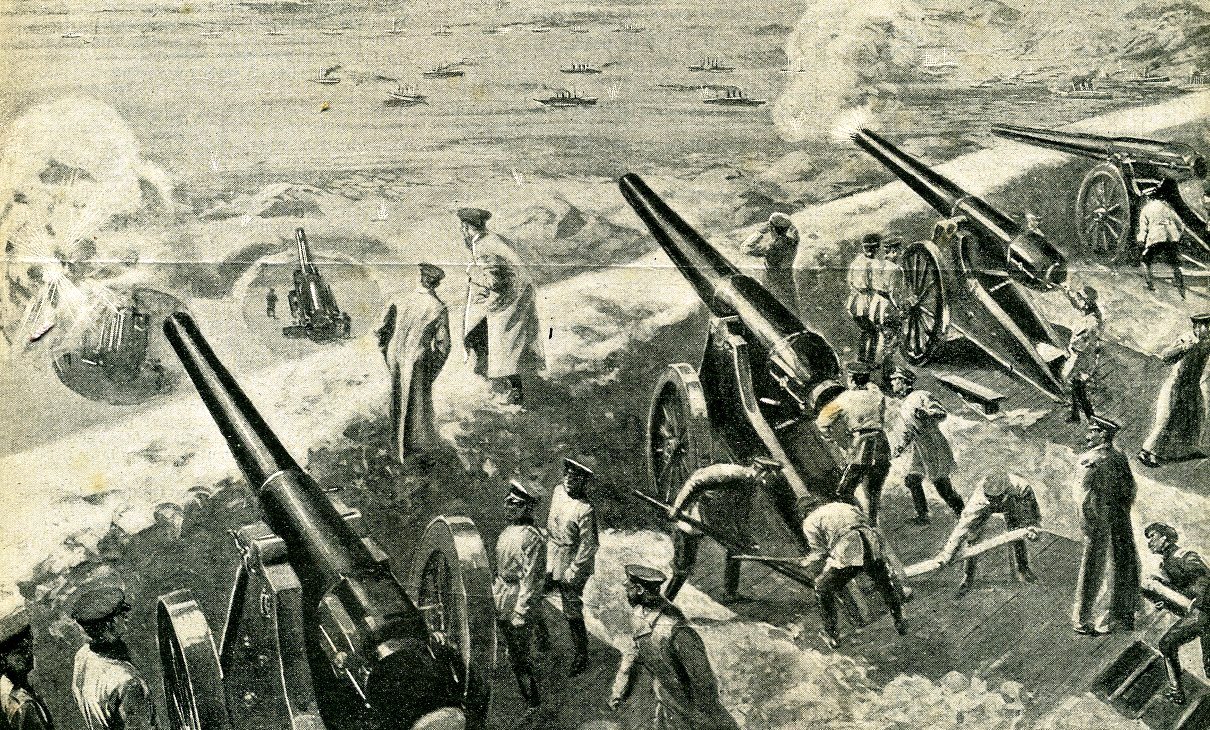
A coastal battery at Port Arthur
As with previous wars, coastal defenses played an important part in the conflict between Russia and Japan. The batteries protecting the Russian base at Port Arthur were unable to prevent the surprise torpedo attack that the Japanese opened the war with, but they were quite effective at driving off a Japanese attack the next day. Despite some initial problems, these batteries continued to be effective in keeping the Japanese at bay until Port Arthur was taken from the landward side. The siege also saw the Japanese use 11" howitzers to sink most of the ships of the Russian Pacific Fleet. The fact that the Army had sunk the ships was a significant blow to the Japanese Navy, although they were able to redeem themselves at Tsushima.
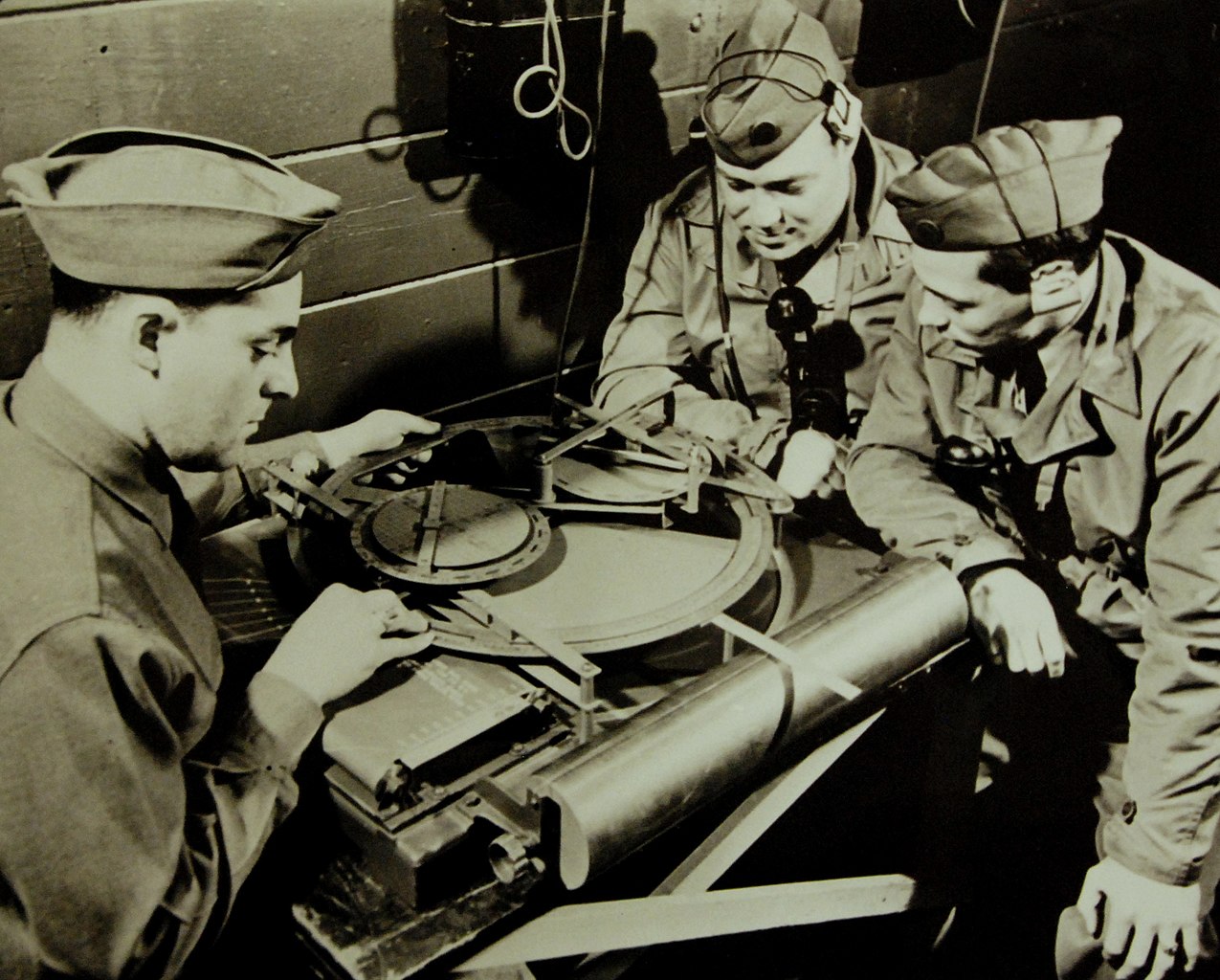
Coast Artillerymen work a Deflection Board, part of the new fire control system
In the United States, work had been continuing on the existing program of fortifications dating back to the 1880s, but in 1905, President Roosevelt thought it was time to reevaluate the program, establishing a board under his Secretary of War, William Howard Taft. On the whole, the Taft Board endorsed the previous program, but with a few changes. Technology had also advanced during the intervening two decades, and new features were added to the program. These included searchlight batteries for night fighting, general electrification of the defenses, and, most importantly, the replacement of individual gun aiming with a centralized fire-control system. The system adopted was similar to those being introduced at sea during this era, although in theory it was superior for two reasons. First, it didn't have to stabilize for a pitching, rolling deck. Second, unlike naval systems that relied on short-baseline rangefinders, it could use two widely-separated observation posts to locate ships, theoretically giving far greater accuracy.1
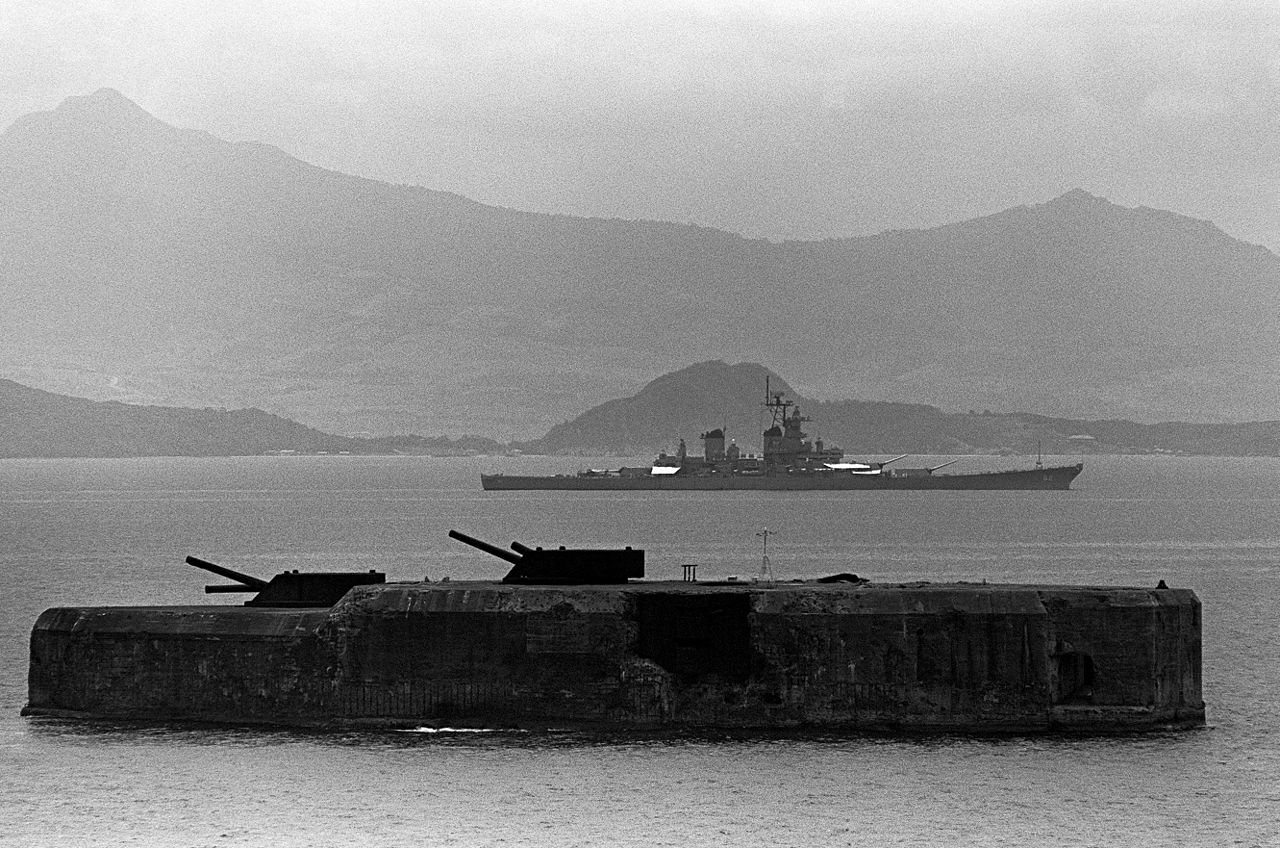
Fort Drum in later years, with New Jersey in the background
The Taft Board also drew up defense plans for the new overseas territories the US had acquired, with batteries eventually being installed in the Philippines, Panama, Hawaii, and Guantanamo Bay, Cuba. These saw the number of weapons shrink yet again as their individual power grew, including a new 14" gun and an improved 12" mortar that was installed in twin batteries instead of quads. The most notable fort from this program was Fort Drum, built on an island in the mouth of Manila Bay. The island was too small for a conventional fort, so it was razed down to the waterline, and a concrete fort built on top of it. Two twin 14" turrets2 and a quartet of casemated 6" guns armed the fort, which was nicknamed "the stone battleship" for its more than passing resemblance to such a vessel. Other Taft installations were much more conventional, with most in disappearing mounts.
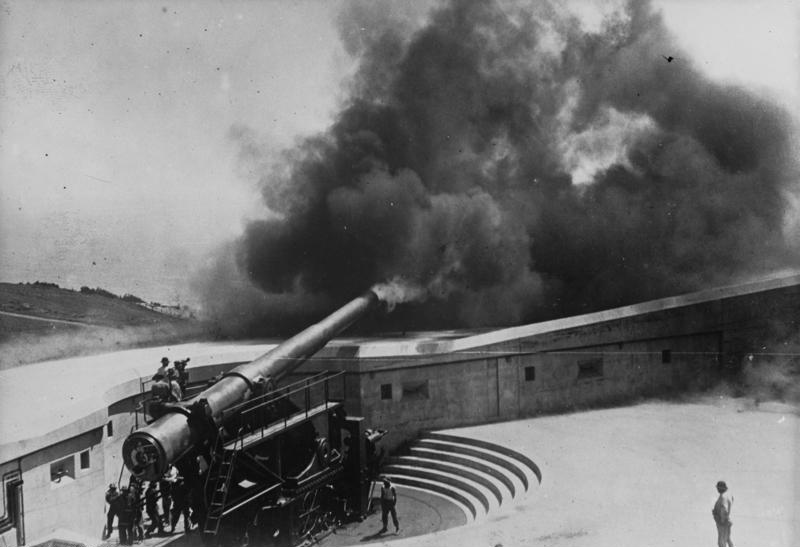
A 14" disappearing gun at Fort MacArthur
The only continental site added to the program during this era was the burgeoning city of Los Angeles, whose defenses were centered around Fort MacArthur, in San Pedro. Guns weren't installed until 1917, and test firings were unpopular with the neighbors, as the muzzle blast tended to break windows. There was also a major organizational shift in the US, as the Army's Artillery Branch was split in 1905 into separate organizations for Field Artillery and Coastal Defense Artillery, reflecting the increasing specialization of these fields.
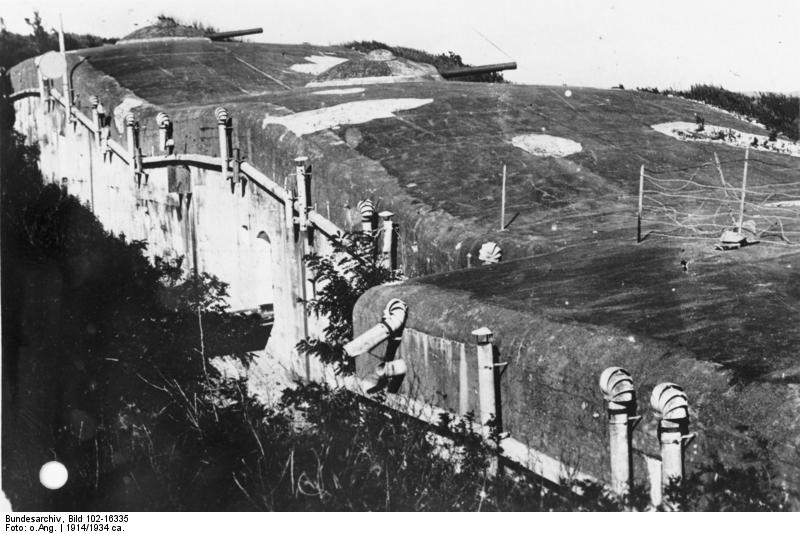
Fortifications at Tsingtao
These works were never challenged during the war that broke out in 1914, a condition that applied even to the vast majority of fixed fortifications in the combat zone. Submarines, mines, and torpedo craft had made coastal areas very lethal for enemy ships, and the primary purpose of coastal fortifications in practice was to stand off an attacking force while it was attrited. Oddly, the British, despite frequent panics over German invasion, didn't invest heavily in fortifications. For reasons that aren't entirely clear, they focused instead on defeating a landing on an undefended section of coast, and the Royal Navy managed to win the battle with the Army over its ability to prevent invasion.3 A few new positions were set up to protect the bases from which a war with Germany might be fought, although others had to be improvised after war broke out. The Germans invested more heavily in fixed defenses. The fortifications around their colony at Tsingtao in China were sufficient to force the Japanese to land their troops in Chinese territory and attack from the landward side, much as they had done at Port Arthur a decade earlier. Stronger defenses were in place on the North Sea and Baltic coasts, and were sufficient to deter several British schemes that involved amphibious landings in the area.
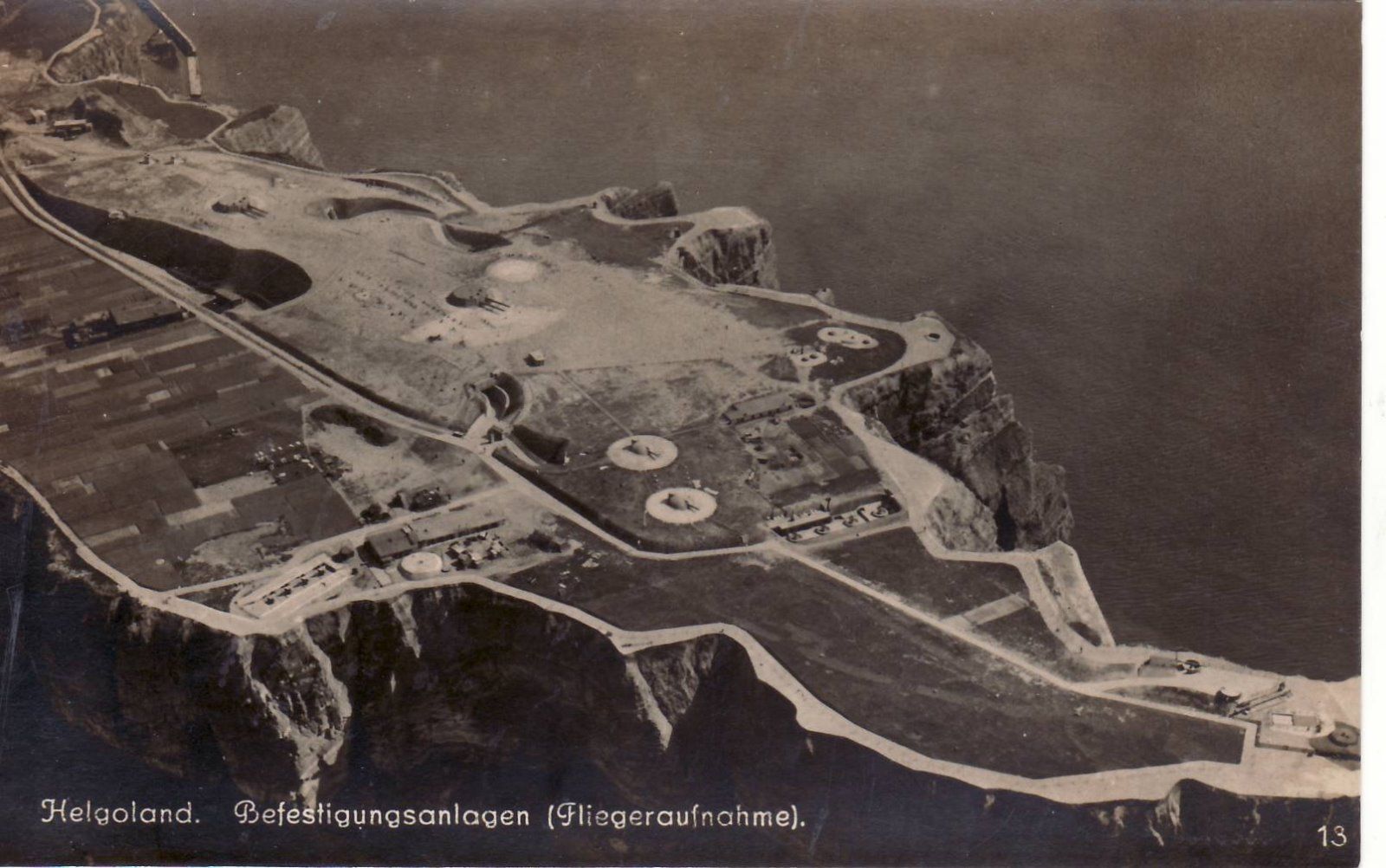
Heligoland at the end of the war, showing several of the gun turrets located on the island
One particular target was Heligoland, a North Sea island about 40 miles off the German coast. The British had acquired it during the Napoleonic Wars, but had traded it to Germany in 1890 in exchange for Zanzibar. The Germans immediately began work on fortifications centered around a quartet of 21 cm guns and eight 28 cm howitzers. In 1912, these were supplimented by four twin 30.5 cm/50 turrets, similar to those used on contemporary battleships.4 As a result, British plans to seize the island and use it as a forward base to bottle up the High Seas Fleet with destroyers and mines had to be abandoned.
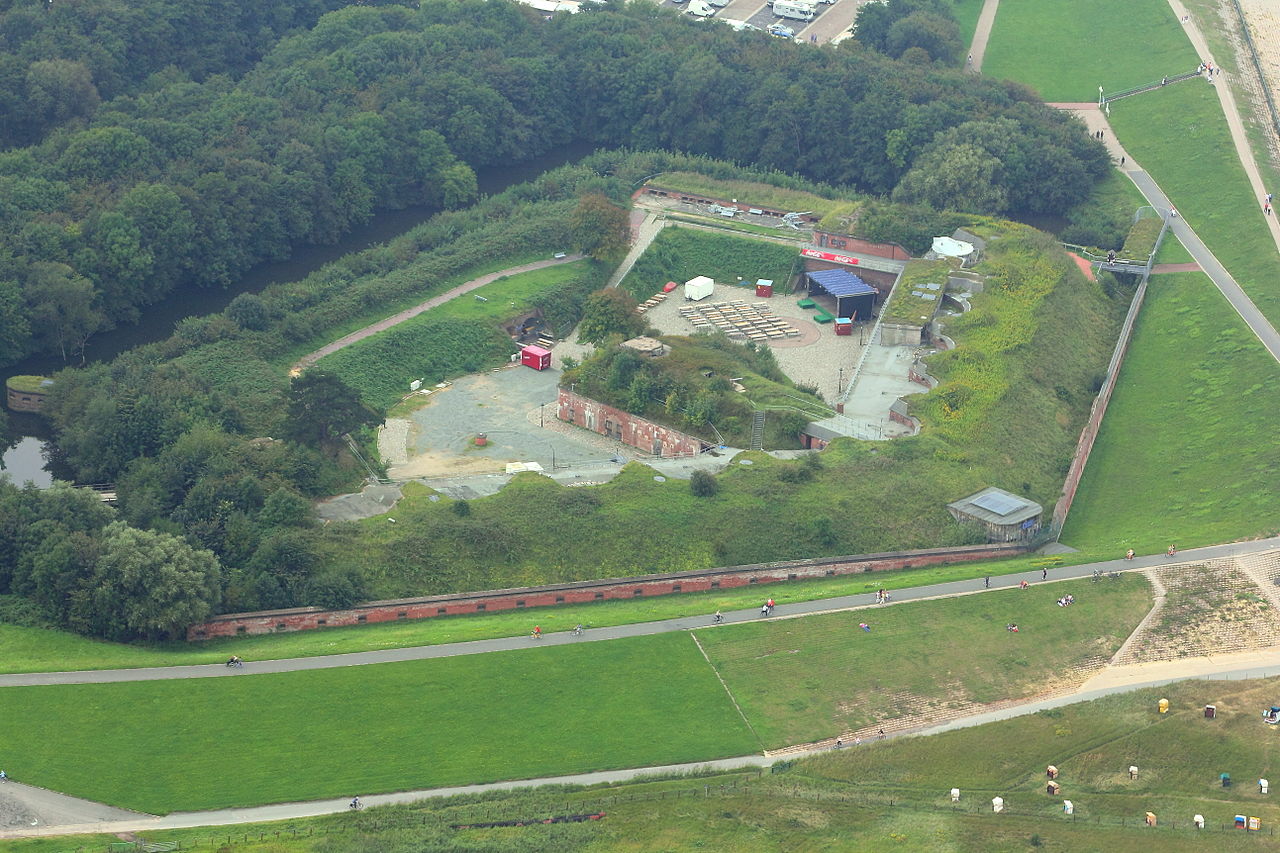
Fort Kugelbake at Cuxhaven, on the mouth of the Elbe. It is the only German fortification on the North Sea still intact.
The British considered other islands for the same purpose, most notably Borkum and Sylt, both much closer to the German coast. These were both fortified, if not quite as heavily as Heligoland, but this was counterbalanced by the fact that they were within artillery range of the mainland, and both plans were also abandoned, as were several schemes to seize bases from the neutral Danish or Dutch. The Germans also had defenses, including heavy guns, around major ports such as Kiel and Wilhelmshaven. These had been heavily emphasized in the wake of the Franco-Prussian War, but major fortification construction seems largely to have stopped in the 1880s, presumably as focus shifted towards the seagoing fleet.5 A handful of modern guns were installed in the years leading up to WWI, but the majority of the weapons on the German coast dated back at least 30 years by the time war broke out. Jackie Fisher suggested skipping all of this and penetrating into the Baltic, using a fleet of specialized shallow-draft ships to land an army on the undefended German coast within 100 miles of Berlin. Fisher never left a formal plan, and despite the lack of coastal defenses, there was significant skepticism over the survivability of the invasion force in the narrow waters of the Baltic.
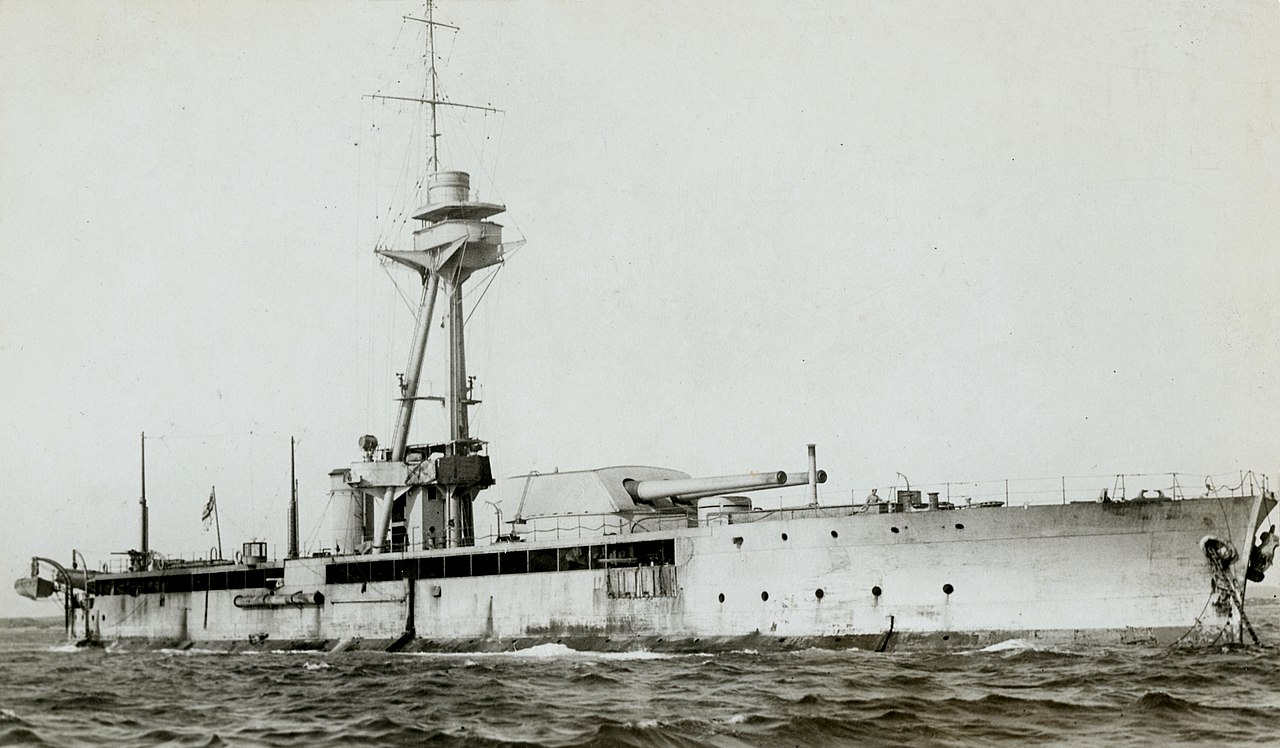
Monitor Roberts, one of the ships built for Fisher's Baltic Plan
Ultimately, Fisher's scheme lost out to an alternate one, proposed by Winston Churchill, First Lord of the Admiralty.6 Churchill turned the British focus away from Northern Europe and into the Eastern Mediterranean, where what he saw as an opportunity to easily knock Turkey out of the war would instead fail at least partially due to Turkish coastal defenses.
1 In practice, this might not have worked nearly as well as they'd hoped. Similar systems were tried at sea, and they had serious problems making sure that both observers were looking at the same ship. ⇑
2 Note that these turrets were designed and built by the Army and armed with the Army's 14" guns, not Navy weapons. ⇑
3 I have to wonder if the framing of the invasion argument didn't have more to do with interservice politics than anything else. I have no clue what German doctrine was, even assuming they had any. But if you're focused on the "a wild Army appears" threat, then the best answer is an army of your own, which was very convenient for the senior Army officers who wanted that. Coastal fortifications are much less fun to march around on parade. On the other hand, amphibious warfare at that point was pretty much focused on undefended beaches, and I guess they (wrongly) assumed that the railroads would make it a lot easier for an attacking army to move about once ashore. But this is all speculation on my part. ⇑
4 These turrets were apparently equipped with cast armor instead of the far more effective face-hardened type used on ships. Interestingly, the wiki article at the time of writing says that Heligoland had 142 42cm guns, and to be fair, the source it references says the same thing. This is patently absurd. The British apparently said 142 guns based on mistaking air shafts for guns, while the Germans didn't even think about a 42 cm gun until after Jutland. Also, 142 coastal guns of that size probably would have caused Heligoland to tip over, assuming anyone would be crazy enough to devote that many to defending one island. Total production of the 30.5 cm SK L/50, the most widely used German heavy gun, was probably around 190. ⇑
5 As best I can tell, these fortifications were largely in line with what was going on elsewhere in the world. Thanks to Neal for his help with research on this. ⇑
6 For those confused, this was essentially the equivalent of the US Secretary of the Navy. ⇑

Comments
Is the Heligoland tipping over comment a reference to the Guam thing that Blackshoe linked over in the open thread?
It is, yes. I will never not be amused by Hank Johnson, who is astonishingly still in Congress.
A question about this bit:
Are you saying that "they" = Germany, and the British assumed Germany would land away from defenses? Or are you saying "they" = Britain, and since British doctrine assumed that landings would be made away from defenses, the Brits didn't bother with defenses as a reflection of their own doctrine? Or something else entirely?
Also, regarding the window breaking thing, I heard the same when I visited Fort Rinella in Malta(centred around an 18" gun, which is tied for the largest gun still in existence today). Apparently before their quarterly test-firings, they would send out riders for some substantial distance, to warn all nearby houses to open their windows, to avoid shattering.
"They" was the British, who were assuming the Germans wouldn't attempt a direct assault on a major harbor or anything. I don't actually know what German doctrine was, even assuming they had any on the subject. (This is a very dubious assumption. The German Army had an interesting view of amphibious operations. I've seen a bit on their plans for a war with the US, and was not impressed. And yes, that's on my idea list.)
I heard the HARP gun in Barbados used to break windows too.
I have, floating around here someplace, a novel entitled 1905 about a hypothetical invasion of Long Island by the Kaiser. The whole thing comes off as sort of absurd; but I'm wondering what inspired it.
Probably actual plans by the Germans for war with the US. I have a book on the subject, and writing up stuff out of it is on my long-term idea list.